Provide exemplary stewardship of institutional resources to foster the long-term sustainability of MSU and its high-quality education, research, and outreach and engagement programs.
Primary Metrics
MSU has established a goal of cutting greenhouse gas emissions to 292,934 metric tons of CO2, a 50% reduction from the 2010 baseline of 585,867. The university is making steady progress, with a 36% reduction achieved to date from the 2010 baseline.
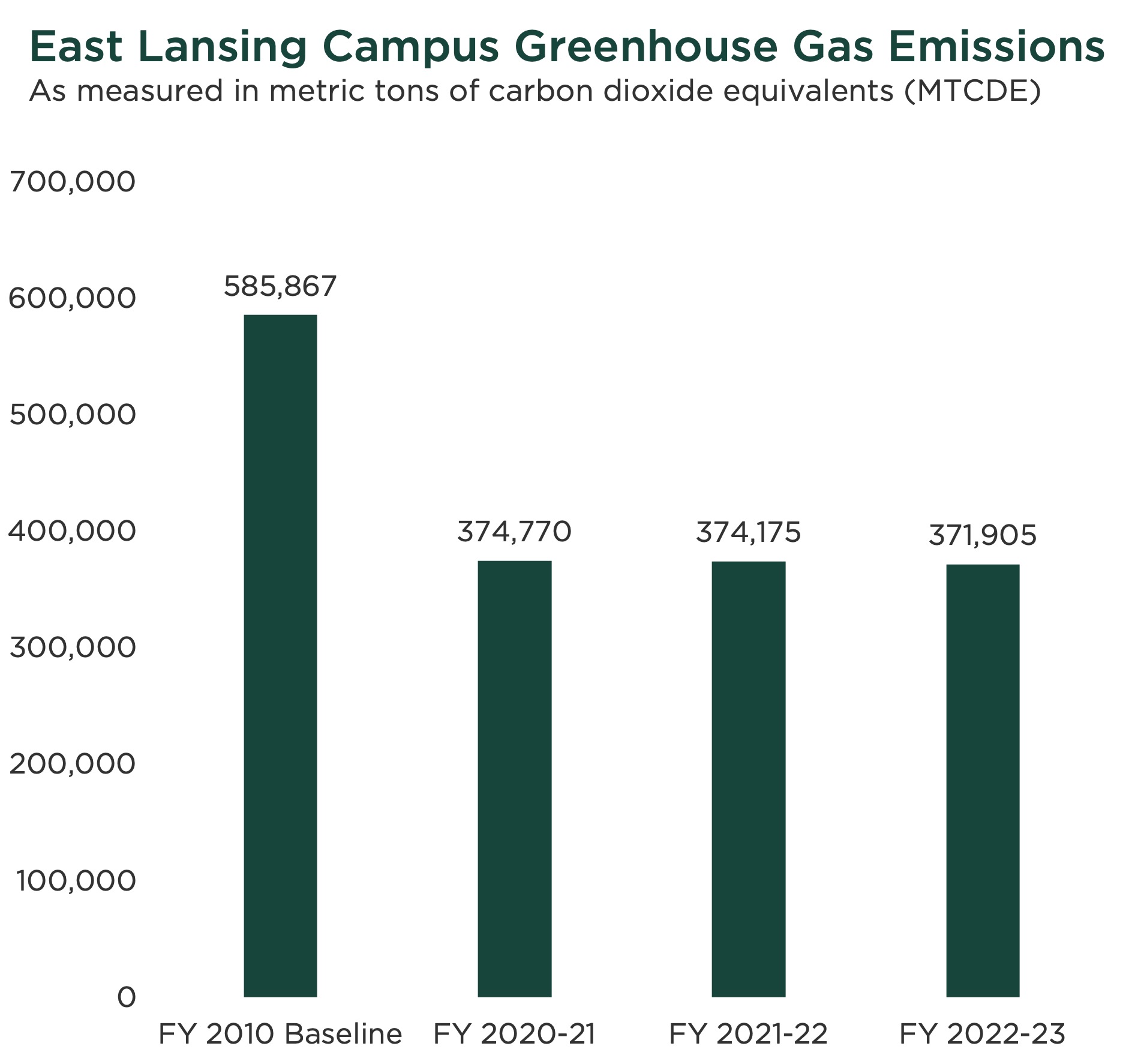
The Times Higher Education Impact Rankings honor the commitment universities around the world make in the communities in which they operate, specifically looking at themes of poverty, inequality, climate change, environmental degradation, peace and justice. MSU is recognized for its global partnerships and efforts to help restore and conserve ecosystems.
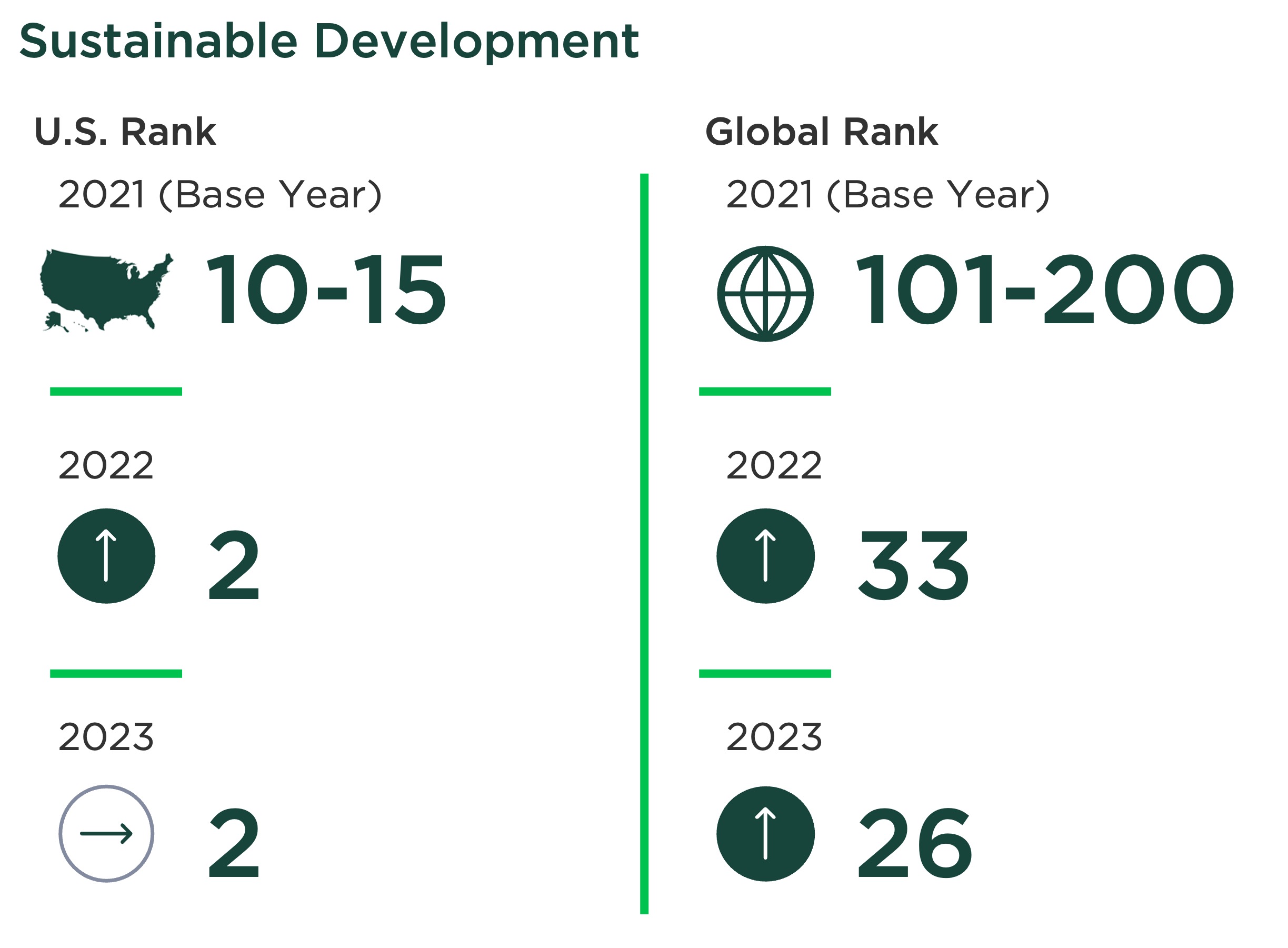
MSU was ranked above No. 100 in 2021, the first year the university participated in this ranking.
Through the generosity of alums and friends, MSU raises money via annual new gifts and commitments.
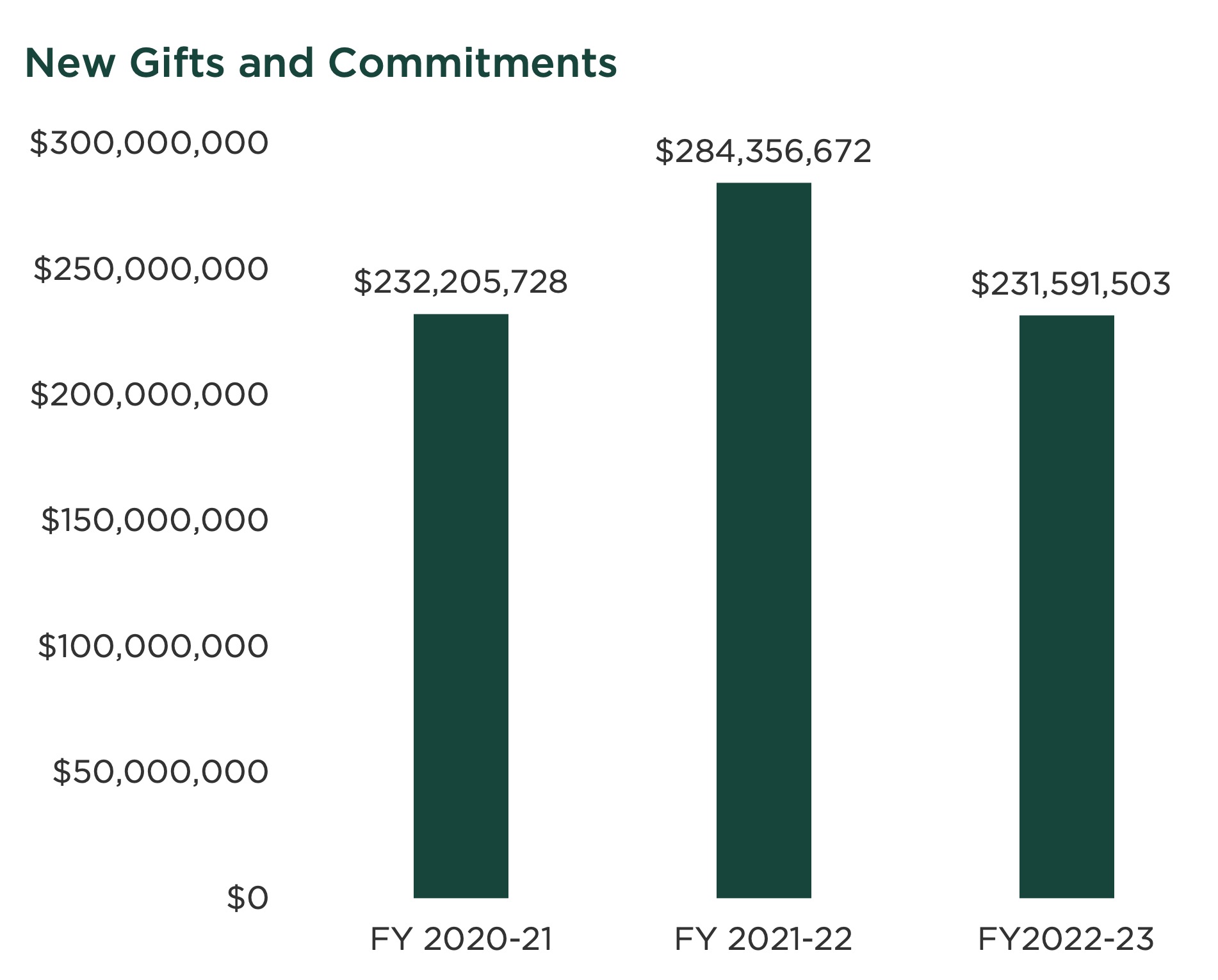
Key Initiatives
Improved financial tools
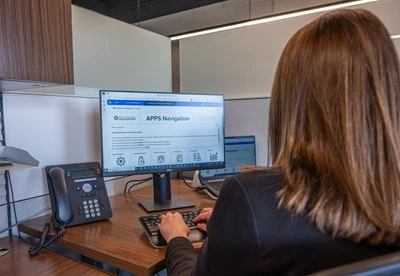
The new Spartan Financial Navigator system is a modern budget and planning tool introduced for the fiscal year 2024-25 budget. The tool allows MSU to develop a long-term financial framework when coupled with the recently implemented all-funds budgeting approach. Additional capabilities to further improve forecasting and analytics are planned for implementation in subsequent years. In addition, the university has engaged external consultants to provide comprehensive review and analysis of internal processes and spending trends to identify areas for institutional improvements.
The future of transportation
In partnership with the Michigan Department of Environment, Great Lakes and Energy; Consumers Energy; and the Capital Area Transportation Authority, MSU installed two direct current, fast-charging EV stations, located at the CATA Multimodal Gateway in parking lot 80 at 1240 S. Harrison Road in East Lansing. Available for public use, the stations can recharge any compatible electric vehicle in under an hour. The location of the stations was determined using research by an associate professor in MSU’s College of Engineering.
Increasing supplier diversity
The university is piloting a new tool to improve business inclusion by providing infrastructure that streamlines and enhances processes for strategic sourcing, prospective partner registration and spend reporting. The goal is to increase understanding of market availability, help buyers strategically source and solicit bids for robust bid pools, and allow prospective partners to proactively share their core capabilities and interest in doing business with MSU, as well as build relationships that support diverse outreach and sustainable and socially responsible procurement.
Vision 2050
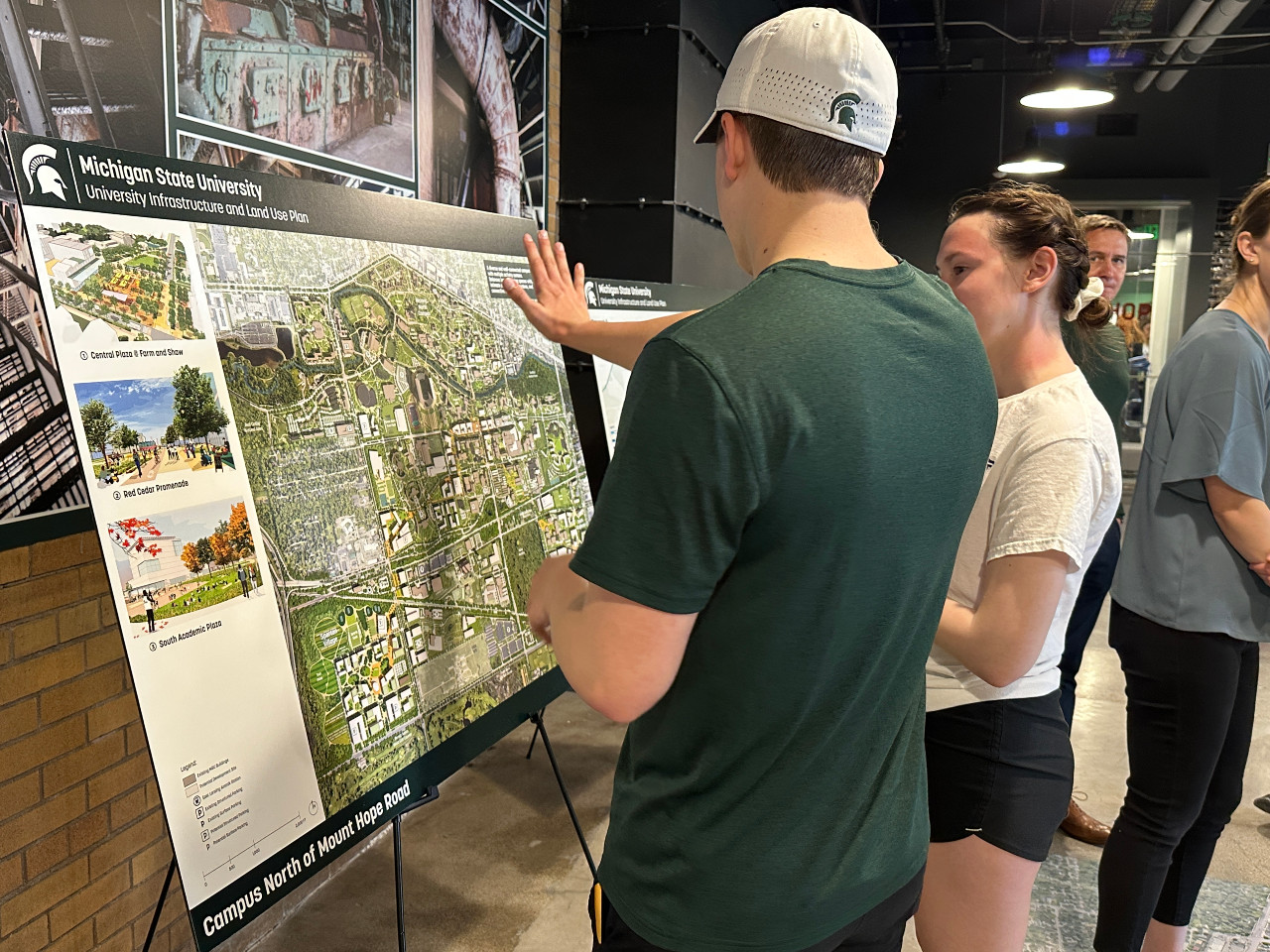
Vision 2050: An Integrated Facilities and Land Use Plan seeks to embed diversity, equity and inclusion; student, faculty and staff success; and sustainable health in all campus, research and land use activities. It provides a flexible framework of recommendations to guide the campus’s physical development for years to come. By completing the plan, MSU has successfully achieved Objective 2 of the Stewardship and Sustainability Theme in the MSU 2030 Strategic Plan. Vision 2050 will now serve as both a near-and long-term guide for campus planning.
Technology modernization and efficiency
To provide optimal value in a cost-efficient and sustainable manner, MSU redesigned its portfolio management practice and aligned the service portfolio to the Educause service model. This enables industry best practice for optimization, planning and delivery. These initiatives result in resources reallocated from low-impact and redundant technology services to enterprise technology. In addition, the recent retirement of the MSU mainframe, in service since 1981, saved the university $1 million annually in maintenance and support expenses associated with this infrastructure, and dial-up internet services were discontinued due to low utilization and the availability of more cost-efficient alternatives.
More Key Initiatives
Spotlight Stories
MSU ranked in top 30 globally for sustainability
The QS Sustainability Rankings measure how well universities are addressing the world’s greatest environmental, social and governance issues.
MSU re-evaluates space for the south campus farms
This effort aims to create 66,000 square feet of usable space for future agricultural and educational needs, ensuring a safer environment for students and researchers.
‘All Michiganders will now have more opportunity’
Two MSU professors are helping to bridge the digital divide for more than 28,000 Michigan households.
More Stories
- Dec. 10, 2024: MSU ranked in top 30 globally for sustainability
- Dec. 9, 2024: Making room: MSU re-evaluates space for the south campus farms
- Nov. 20, 2024: ‘All Michiganders will now have more opportunity’: MSU research bridges Michigan’s digital divide
- July 17, 2024: MSU Museum begins 18-month renovation project
- June 12, 2024: MSU ranked in top 25 globally for sustainability by Times Higher Education
- April 25, 2024: Podcast: 'Complex infrastructure' delivers power and water needs to a 'complex institution'
- April 15, 2024: Vision 2050 comprehensive facilities and land use plan a key component in MSU 2030 strategic plan
- Feb. 12, 2024: MSU joins Consumers Energy Renewable Energy Program